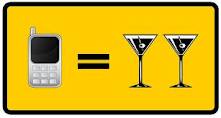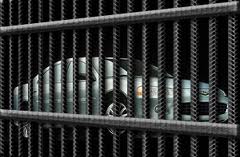San Diego Sheriff’s Department held drunk driving checkpoints in many areas in San Diego County this past weekend as part of their efforts to keep drunk drivers off the road this holiday season.
The San Marcos DUI checkpoint was held at 125 South Rancho Santa Fe Road on December 17th, at 7:00 p.m. until December 18th, at 2:00 a.m. The sheriff’s office reported that 2,271 vehicles passed through the checkpoint and 582 drivers were contacted. Five drivers were suspected of driving under the influence and they did the field sobriety tests. Four of those drivers were arrested for DUI. Two others were also arrested for driving while their license was suspended due to a prior DUI.
The Santee driving under the influence roadblock was held on December 17th. However, the exact location was not provided in the San Diego Sheriff’s Department press release. In that checkpoint, 525 drivers were contacted, 28 drivers were sent to secondary, 13 were given field sobriety tests because they were suspected of being under the influence, and 4 were arrested for drunk driving.
Vista’s drunk driving roadblock was held at 1450 East Vista Way on December 16th, from 7:30 p.m. until December 17th, at 2:00 a.m. The sheriff reported that 1,128 vehicles passed through the checkpoint and 677 drivers were contacted. Field sobriety tests were given to 7 suspected of being under the influence, resulting in 4 arrests.
Lemon Grove conducted a DUI checkpoint at the 7900 block of Broadway on December 16th, from 8:00 p.m. until 1:30 a.m. During this operation, 646 drivers were contacted, 43 were sent to secondary, and 2 drivers were arrested for allegedly driving under the influence.
Throughout San Diego County, 212 people have been arrested for DUI from 12:01 a.m. Friday, December 16th, through 11:59 p.m. Sunday, December 18th. This is up from 196 in 2010 during the same time period.
The San Diego Sheriff’s also just announced more saturation patrols and DUI checkpoints through New Year’s. They specifically stated they will be out in force around Qualcomm Stadium on December 21st during the Poinsettia Bowl football game. A checkpoint will be conducted in Poway and Oceanside on December 23rd, (exact location not provided). Further saturation patrols will be ongoing throughout San Diego County from December 23rd through the 24th.
You can expect that San Diego law enforcement will continue to conduct saturation patrols and drunk driving checkpoints throughout San Diego during the New Year’s weekend also. Make sure you are not a statistic! Plan ahead and either plan to stay the night or have alternative transportation lined up before you head out to indulge in holiday cheer.
 San Diego DUI Lawyers Blog
San Diego DUI Lawyers Blog






 Pacific Beach, Chula Vista, Imperial Beach, and Encinitas had DUI checkpoints set up over the weekend. Fourteen drivers were arrested for driving under the influence, according to
Pacific Beach, Chula Vista, Imperial Beach, and Encinitas had DUI checkpoints set up over the weekend. Fourteen drivers were arrested for driving under the influence, according to  Californians now believe that drivers who text or talk on their cell phone, with or without a hands free headset, are a bigger hazard on the road than
Californians now believe that drivers who text or talk on their cell phone, with or without a hands free headset, are a bigger hazard on the road than  San Diego County law enforcement, including the San Diego Sheriff’s Department and the California Highway Patrol, have announced
San Diego County law enforcement, including the San Diego Sheriff’s Department and the California Highway Patrol, have announced  After the verdict was read, he was immediately handcuffed and taken into custody. His sentencing is scheduled for December 19th. Arevalos will be held without bail until that date. The maximum he could serve is 10 years and 4 months.
After the verdict was read, he was immediately handcuffed and taken into custody. His sentencing is scheduled for December 19th. Arevalos will be held without bail until that date. The maximum he could serve is 10 years and 4 months. You have been charged with drunk driving under
You have been charged with drunk driving under  San Diego County police departments and other California law enforcement agencies will have new limitations on towing unlicensed drivers’ vehicles when they conduct
San Diego County police departments and other California law enforcement agencies will have new limitations on towing unlicensed drivers’ vehicles when they conduct